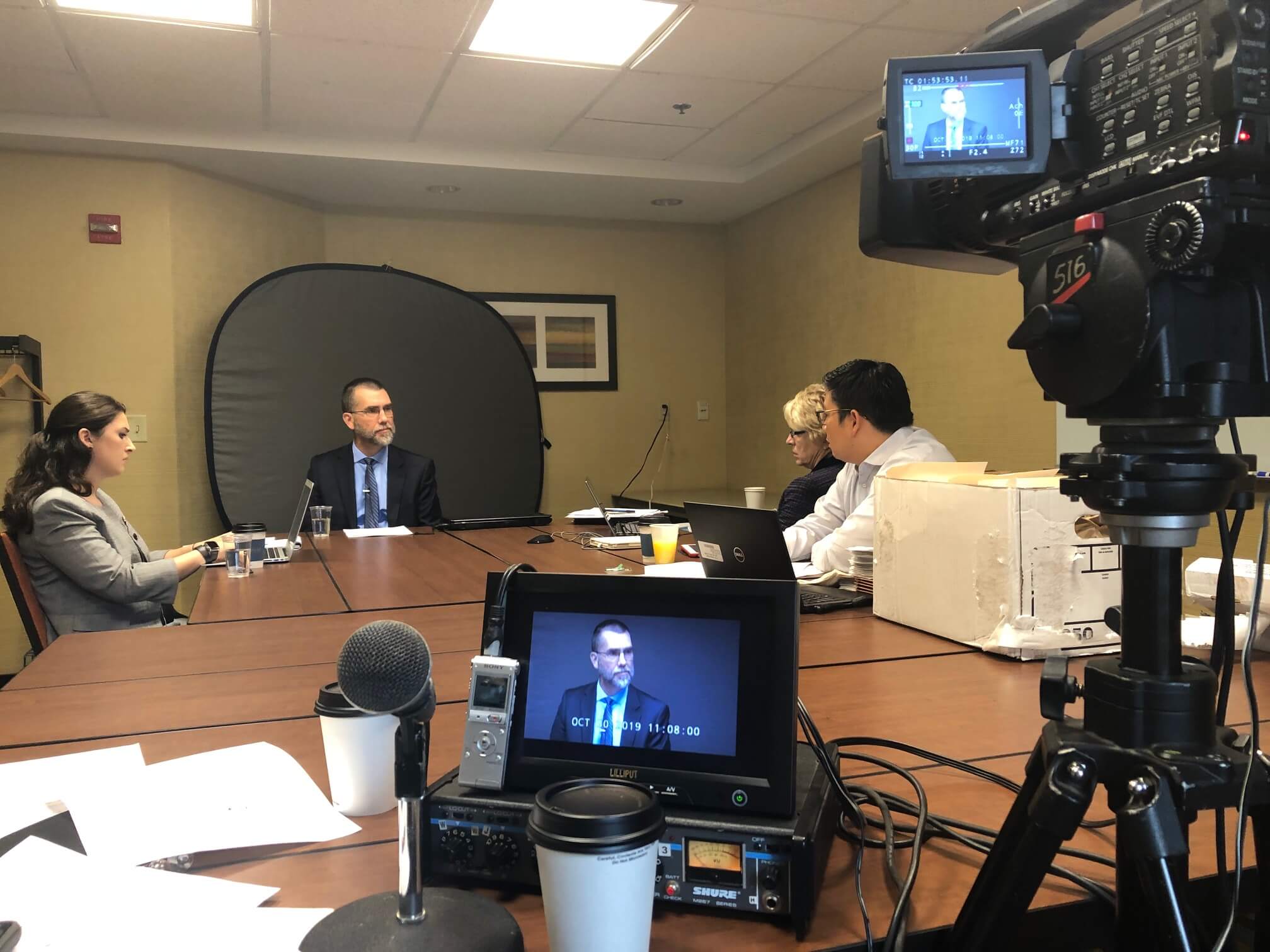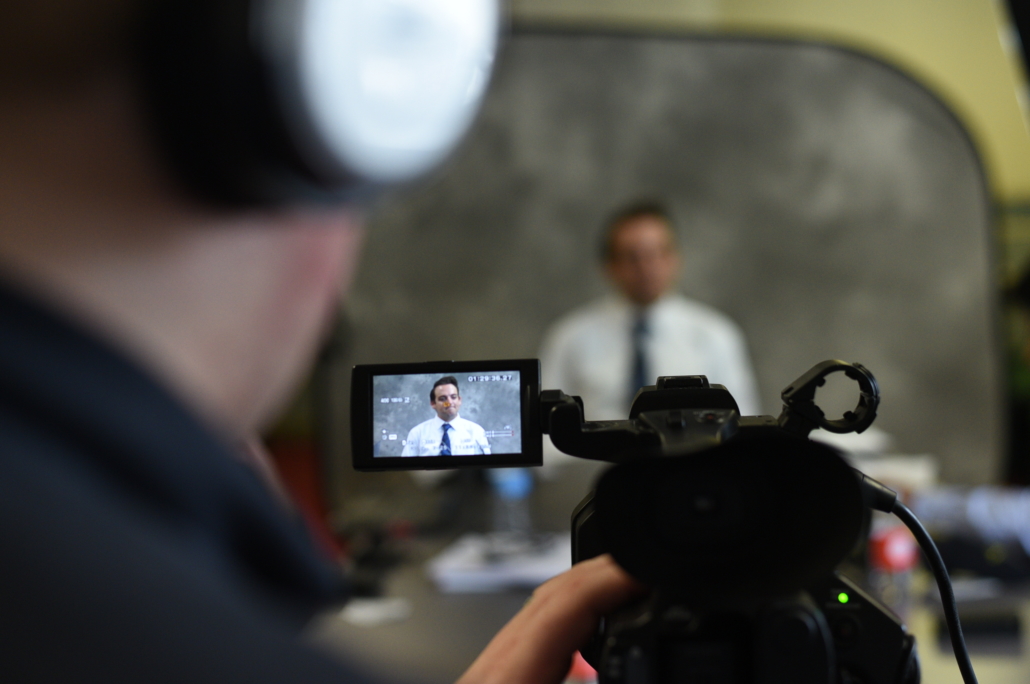Top Advantages of Professional Legal Videography for Court Cases
Top Advantages of Professional Legal Videography for Court Cases
Blog Article
Looking Into the Devices of Lawful Videography: Introduction Its Procedure in Shielding Authentic Visual Testimony for Judicial Proceedings
In the world of judicial procedures, the duty of legal videography stands as a keystone in protecting and offering visual proof. As innovation proceeds to advancement, the devices behind legal videography have actually become significantly elaborate, supplying an important layer of credibility to statements recorded on video.
Historical Advancement of Lawful Videography
Analyzing the historic progression of lawful videography reveals a significant change in the capturing and discussion of aesthetic evidence within the legal landscape. In the past, lawful process heavily counted on created photos and records to record events and offer proof. With the advent of video modern technology, the lawful sector witnessed a paradigm shift in how visual statement was caught and provided.
The development of lawful videography can be mapped back to the late 20th century when innovations in video clip recording tools made it more available for use in courtrooms. This technological development not only enhanced the accuracy and reliability of aesthetic proof yet additionally changed the means instances existed to juries and judges (Legal Videography). Lawyers began to identify the persuasive power of video recordings in sharing feelings, nuances, and non-verbal signs that created pictures or transcripts alone could not capture effectively

Technology Advancements in Video Documents
What key technical advancements have changed video documents in the lawful field? The lawful field has actually seen significant innovations in video documents innovation that have actually enhanced the credibility and reliability of visual proof in judicial proceedings.
Additionally, advancements in video clip security and watermarking innovations have actually bolstered the protection and tamper-proof nature of video proof, safeguarding it against unapproved alterations or tampering. In addition, the introduction of cloud storage space solutions and remote gain access to capacities has structured the storage, access, and sharing of video clip evidence, helping with smooth collaboration among lawful professionals and guaranteeing reliable access to critical visual testimonies when required. These technological improvements in video clip documents have actually undoubtedly transformed the lawful area, boosting the accuracy, reputation, and admissibility of visual proof in judicial proceedings.
Function of Lawful Videographers in Courtroom Setups
The development of video paperwork innovation in the legal field has actually demanded a crucial role for legal videographers in courtroom setups, making sure the integrity and integrity of aesthetic testimonies offered throughout judicial proceedings. Lawful videographers play an essential role in recording and protecting exact aesthetic evidence that can be essential in litigation. Their responsibility includes establishing tools, tape-recording process, and creating top quality videos that properly reflect the events in the courtroom.
In addition, lawful videographers often work carefully with legal teams to make sure that the video clip proof straightens Learn More with the instance's needs and can be effectively presented in court to support the legal arguments being made. In general, the function of legal videographers in court settings is important in maintaining the concepts of justice and making certain the openness of legal procedures. Legal Videography.

Ensuring Admissibility and Stability of Video Clip Evidence
To keep the reliability of visual proof offered in legal procedures, making useful site certain the admissibility and integrity of video evidence is an essential responsibility for legal videographers. Admissibility refers to the approval of proof by the court, and for video clip proof to be permissible, it must satisfy specific requirements. Lawful videographers play a crucial role in guaranteeing that the videos they catch adhere to the regulations of proof, such as dependability, relevance, and authenticity.
Stability of video clip evidence involves keeping the creativity and precision of the video footage from the moment it is tape-recorded up until it is provided in court. This includes securely saving the video clip data, documenting the chain of great post to read custodianship, and stopping any type of tampering or alterations. Lawful videographers have to stick to stringent procedures to ensure the integrity of the video proof and stop any type of challenges to its authenticity.
Future Trends in Legal Videography
Offered the boosting reliance on modern technology in legal process, legal videographers are positioned to accept innovative advancements forming the future of aesthetic testimony capture and discussion. One of the prominent fads on the perspective is the integration of digital truth (VIRTUAL REALITY) and increased reality (AR) modern technologies right into lawful videography. These technologies have the possible to reinvent how aesthetic evidence exists in courtrooms, permitting judges and courts to immerse themselves in the scene of the criminal activity or event.
Furthermore, using expert system (AI) algorithms for video evaluation is expected to enhance the process of examining and analyzing big quantities of video footage. AI can help in identifying crucial minutes, anomalies, and patterns within video clips, boosting the efficiency of lawful examinations.

Final Thought
In conclusion, legal videography has actually played an important role in giving authentic visual evidence for judicial procedures. Through technological improvements and the proficiency of legal videographers, the integrity and admissibility of video clip evidence are made certain in court room setups. As lawful videography continues to progress, it will be necessary to copyright requirements that keep the accuracy and dependability of aesthetic testimony for the future of legal process.
Examining the historical development of lawful videography reveals a considerable improvement in the recording and presentation of visual evidence within the lawful landscape.The advancement of video clip documentation innovation in the lawful area has actually demanded an essential function for lawful videographers in court room settings, guaranteeing the stability and dependability of aesthetic testaments presented during judicial procedures. Furthermore, lawful videographers usually function closely with legal teams to make sure that the video clip proof lines up with the instance's needs and can be properly offered in court to support the legal arguments being made.To maintain the trustworthiness of aesthetic proof presented in legal proceedings, making certain the admissibility and honesty of video clip evidence is a crucial responsibility for lawful videographers. As legal videography proceeds to progress, it will be important to copyright criteria that keep the precision and dependability of visual testimony for the future of lawful process.
Report this page